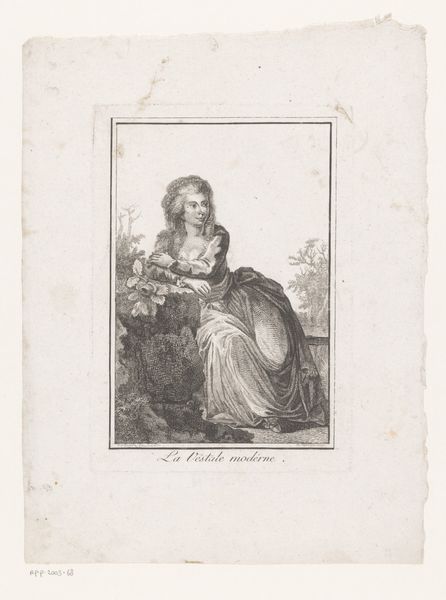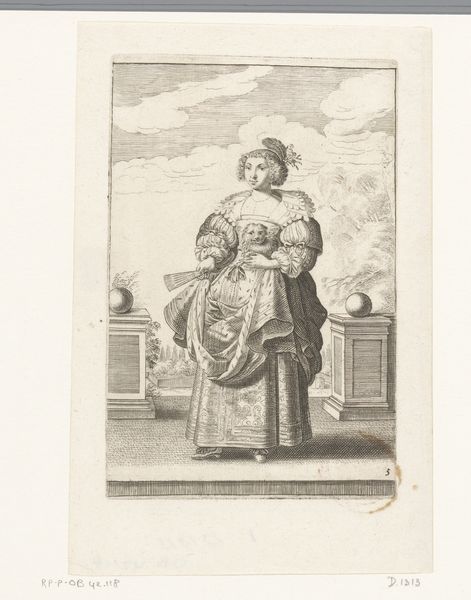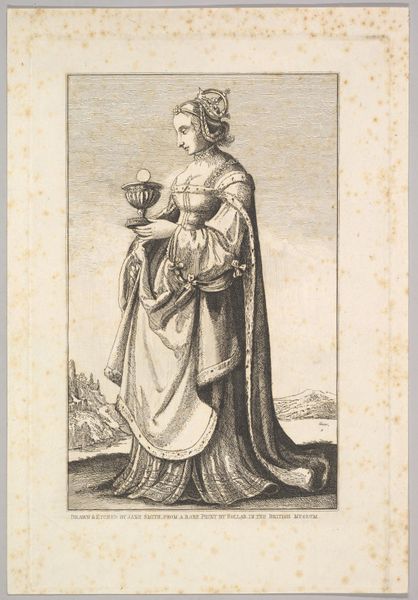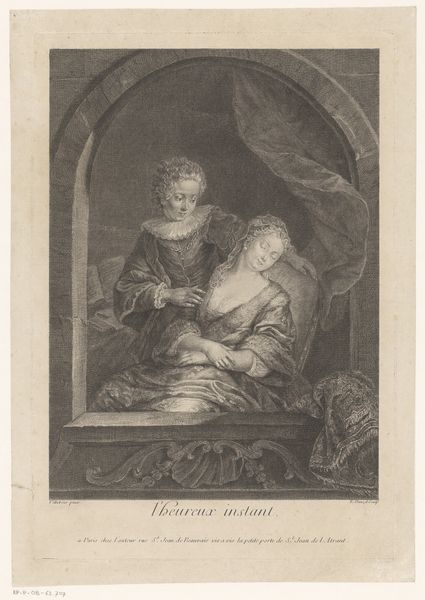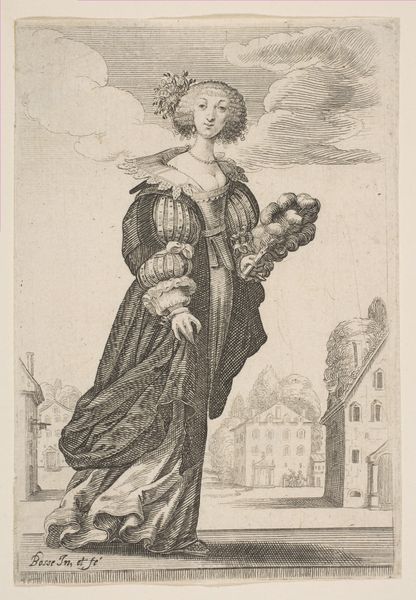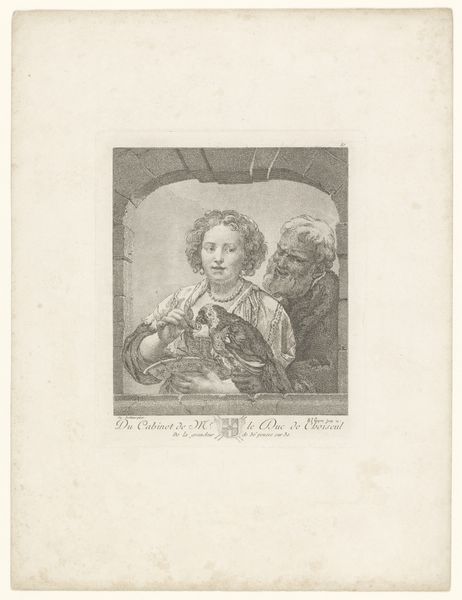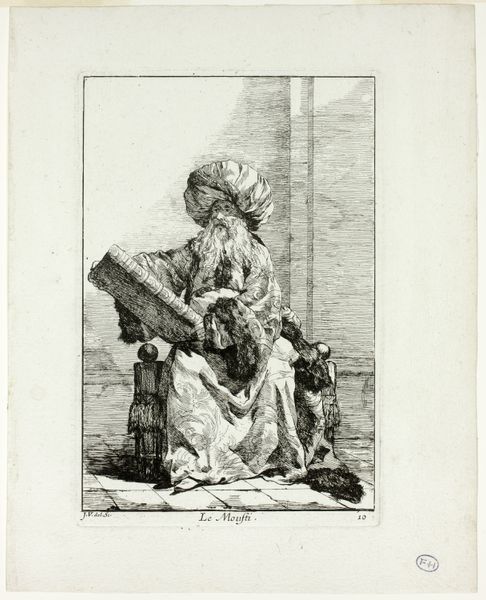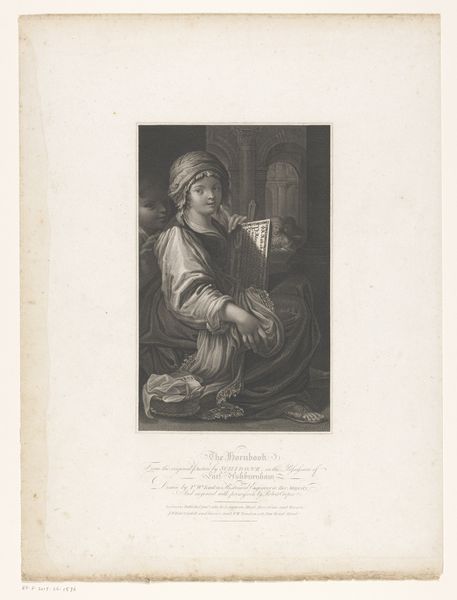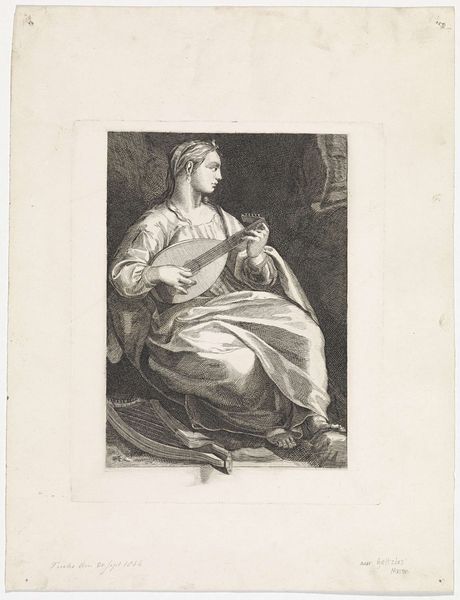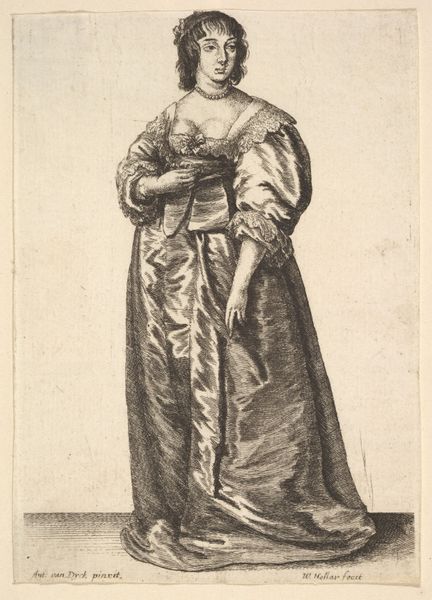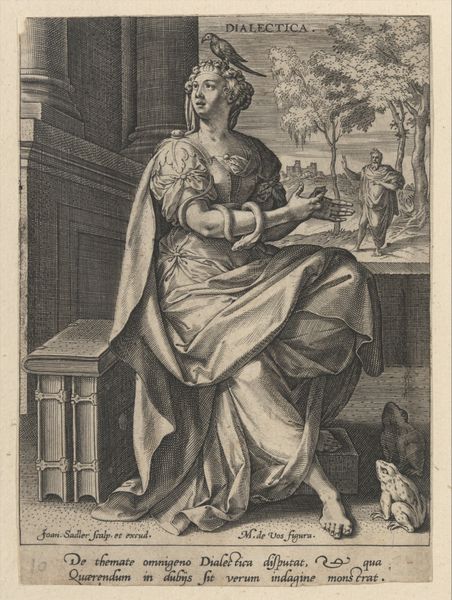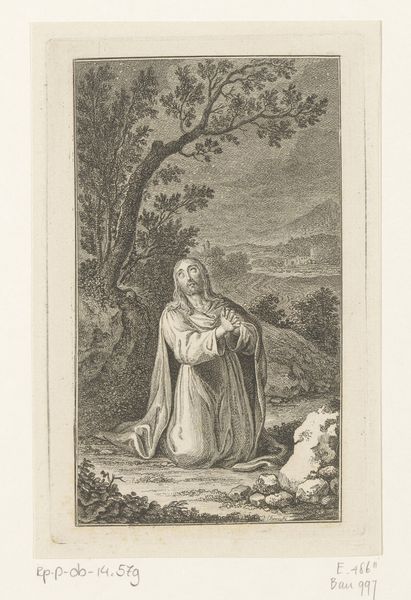
print, engraving
#
portrait
# print
#
dog
#
genre-painting
#
dress
#
engraving
#
rococo
Dimensions: height 159 mm, width 106 mm
Copyright: Rijks Museum: Open Domain
Editor: This engraving, titled "Fashion and Elegance: French Fashions of the 1720s" by François Octavien, really gives a sense of the leisurely pastimes of the wealthy. The woman's dress is so voluminous, and even the dog seems pampered. What symbolic weight might the images here hold for us today? Curator: Precisely! Let's consider that visual language. Note the woman, prominently positioned, but almost overwhelmed by the sheer scale of her surroundings. What does that placement next to the massive urn evoke for you? Does it seem to diminish or amplify her presence? Editor: I see what you mean. It's both. The urn dwarfs her, suggesting a certain societal pressure, almost like she's another ornamental object. But her elegant attire and calm demeanor suggest she holds a quiet power. Curator: That contrast is key. The fountain in the background, the tiny dog in her lap – each of these contributes to the message of leisure and status. The fountain, of course, a controlled, man-made manipulation of nature, suggesting mastery and affluence. And the dog – for centuries, dogs have been symbolic of loyalty, but here, more explicitly, a signifier of wealth and companionship. Consider how dogs still operate as potent status symbols in contemporary culture, despite vast socio-economic shifts. Editor: So it's not just about showing pretty clothes, but also subtly communicating social and cultural values? Curator: Absolutely. It reflects the psychological landscape of the time, the desire to project a specific image of oneself within a complex social structure, a reflection which resonates even now. What do you take away from these reflections on continuity? Editor: Thinking about this engraving and its symbols, I'm seeing a clearer connection between past expressions of status and their echoes in modern society. It's like a thread that continues to weave itself through our culture.
Comments
rijksmuseum about 2 years ago
⋮
During the early 18th century small series of costume plates reported on the fashion of the day. Women wore the loose-fitting robe volante, also called a ‘sack-backed gown’ in English, over which women sometimes added a short, hooded cloak known as a bagnolette. Men dressed in long coats over a waistcoat and knee-breeches. Pig-tail wigs were adorned with large bows, and tricorne hats were tucked under the arm rather than worn on the head. The two large prints from around 1760 show Parisians out for a stroll. Curiously, the women wear wide paniers (hoop skirts) for their promenade on the ramparts. In the caption underneath, they are condemned as silly slaves of fashion who blindly follow the dictates of the latest trends.
Join the conversation
Join millions of artists and users on Artera today and experience the ultimate creative platform.
